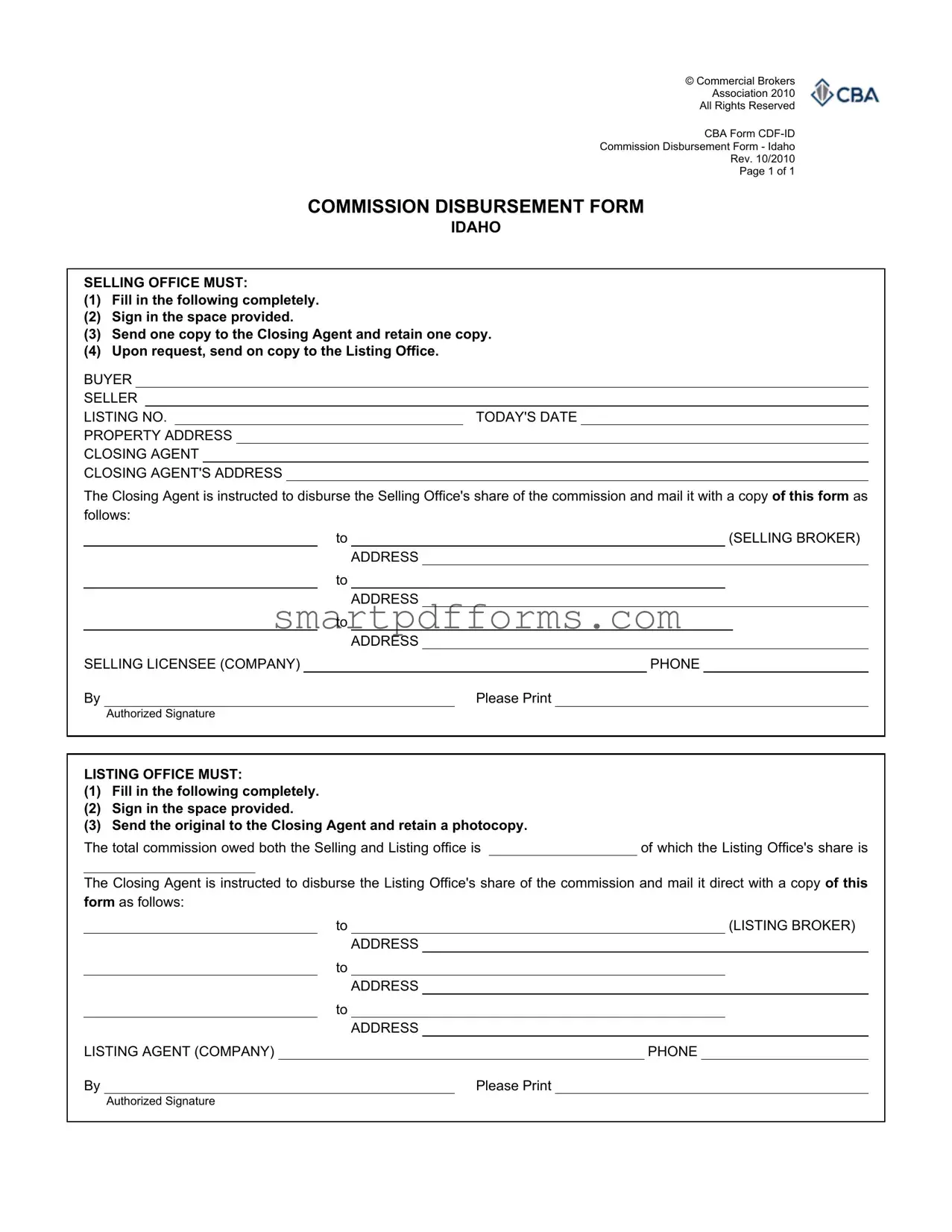Blank Commission Disbursement PDF Template
The Commission Disbursement Form serves as a crucial document in the real estate sector, particularly in Idaho, facilitating the clear and efficient allocation of commission between the selling and listing offices after a property sale. It mandates complete and accurate information entry, signatures from authorized representatives, and specifies the distribution process of commissions, ensuring both parties receive their deserved share. To ensure your transactions proceed smoothly and all parties are compensated appropriately, filling out this form correctly is essential.
Ensure you fill out the form accurately by clicking the button below.
Make This Document Now

